Saturn - an amazing planet!
I will describe for you this time the 6th planet of our Solar System. My favorite! Saturn has a lot to do with Jupiter, but the great ring system makes it unmistakable with any other solar system object.
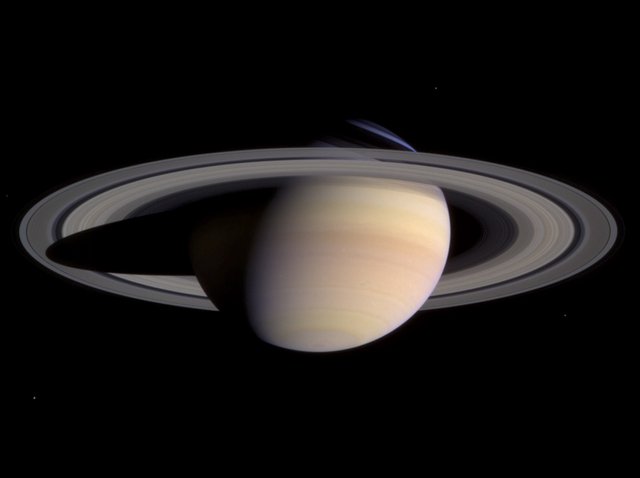
By NASA / JPL / Space Science Institute link [Public domain]
In many respects Saturn can be called the younger brother of Jupiter. It has a similar chemical composition and like Jupiter it is a gas giant. Both planets have relatively low densities compared to terrestrial planets, and Saturn is already a record holder in this respect. Its density is 0.7 density of water! It's the least of all planets. If you put it on a giant ocean, it would float on its surface! In my opinion, Saturn is the most spectacular planet in our solar system. Let's take a closer look at him.
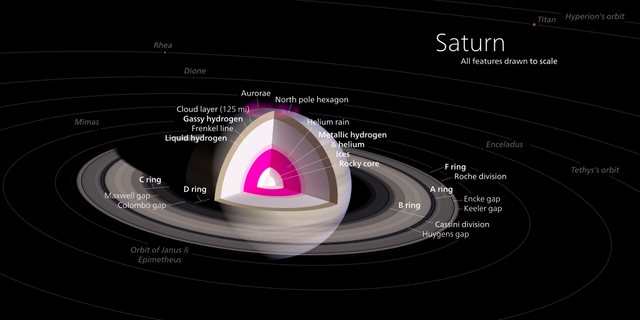
By Kelvinsong link [CC BY-SA 3.0 license]
Saturn also resembles older brother Jupiter with his construction. The planet's rocky nucleus surrounds liquid metallic hydrogen, transforming into a molecular one. The outer layers of this giant are the atmosphere built mainly of hydrogen. The Saturn planet rotates very quickly around its own axis (its one revolution lasts 10 hours and 14 minutes). This causes a flattening at the poles, the largest of all the planets of our solar system. Such a fast rotational movement causes very dynamic weather on this planet.
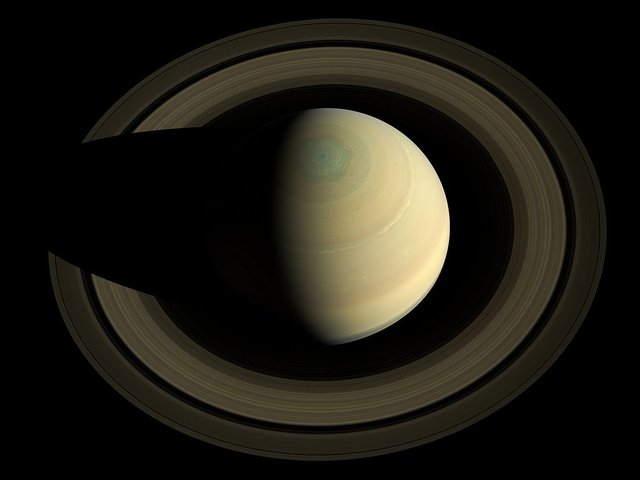
By NASA/JPL-Caltech/SSI/Cornell link [Public domain]
Saturn, like Jupiter, emits more energy than it receives from the Sun. The heat from its inside drives the convection currents in the atmosphere. The wind at Saturn's equator reaches higher speeds than on Jupiter. Wind up to 500 m / s (1,800 km / h) are the largest in the entire Solar System. Unlike Jupiter, there aren't hundreds of small hurricanes here. The wind blows all the time from the east over the entire surface of the planet, obliterating any major details of the atmosphere. Such weather would destroy any probe that would try to delve into the atmosphere of this gaseous giant.
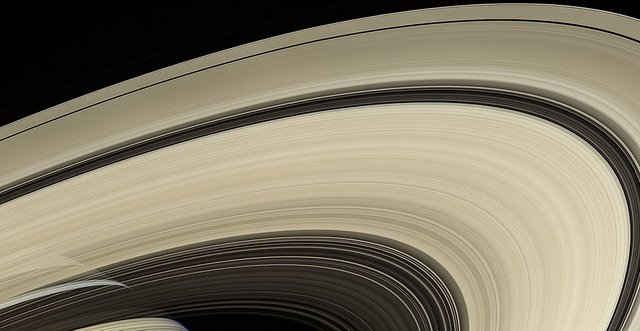
By NASA/JPL-Caltech/Space Science Institute link [Public domain]
Saturn's rings are huge, but very thin at the same time. Their outer diameter is 274,000 km, and their thickness is only 2 km! Viewed from Earth by an amateur telescope, they look like a stiff disk surrounding the planet. In reality, however, they consist of many thinner rings formed from a huge number of rock and ice fragments. There are smaller and larger gaps between the rings. It is still not entirely clear whence Saturn has rings. One of theories their creation is about the disintegration of some of Saturn's old moon as a result of approaching too close to the planet or as a result of hitting the planetoid.
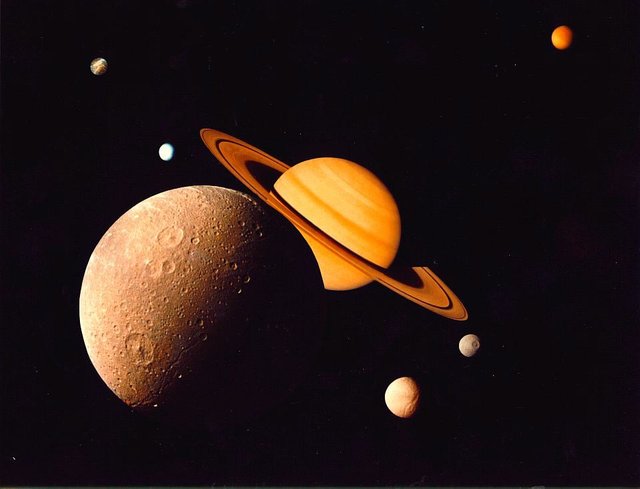
By NASA link [Public domain]
And as for the moons, Saturn has 62 moons! The largest of these is Titan, which is the second largest moon in the Solar System, larger than the planet Mercury and having a dense atmosphere. The other six best known are: Rhea, Iapetus, Dione, Tethys, Enceladus and Mimas. Each of them is a world full of secrets, unfortunately, nowadays, due to the large distances we do not have the opportunity to examine them thoroughly.
Greetings to lovers of Astronomy!
References:

This post has been voted on by the SteemSTEM curation team and voting trail in collaboration with @curie.
If you appreciate the work we are doing then consider voting both projects for witness by selecting stem.witness and curie!
For additional information please join us on the SteemSTEM discord and to get to know the rest of the community!
Thanks for the post. Raw images from the Cassini mission can be viewed here
Thanks for Resteem!